
WB analysis of arsenic trioxide treated U87-MG cell lysate using GTX82986 LC3B antibody.
LC3B antibody
GTX82986
ApplicationsElectron Microscopy, ImmunoFluorescence, Western Blot, ImmunoCytoChemistry, ImmunoHistoChemistry, ImmunoHistoChemistry Frozen, ImmunoHistoChemistry Paraffin
Product group Antibodies
TargetMAP1LC3B
Overview
- SupplierGeneTex
- Product NameLC3B antibody
- Delivery Days Customer9
- Application Supplier NoteWB: 1:1000. ICC/IF: 0.1 - 2 microg/ml. IHC-P: 1:200 - 1:400. IHC-Fr: 1:400. *Optimal dilutions/concentrations should be determined by the researcher.Not tested in other applications.
- ApplicationsElectron Microscopy, ImmunoFluorescence, Western Blot, ImmunoCytoChemistry, ImmunoHistoChemistry, ImmunoHistoChemistry Frozen, ImmunoHistoChemistry Paraffin
- CertificationResearch Use Only
- ClonalityPolyclonal
- Concentration1 mg/ml
- ConjugateUnconjugated
- Gene ID81631
- Target nameMAP1LC3B
- Target descriptionmicrotubule associated protein 1 light chain 3 beta
- Target synonymsATG8F, LC3B, MAP1A/1BLC3, MAP1LC3B-a, microtubule-associated protein 1 light chain 3 beta, MAP1 light chain 3-like protein 2, MAP1A/MAP1B LC3 B, MAP1A/MAP1B light chain 3 B, autophagy-related ubiquitin-like modifier LC3 B, microtubule-associated proteins 1A/1B light chain 3B
- HostRabbit
- IsotypeIgG
- Protein IDQ9GZQ8
- Protein NameMicrotubule-associated protein 1 light chain 3 beta
- Scientific DescriptionThe product of this gene is a subunit of neuronal microtubule-associated MAP1A and MAP1B proteins, which are involved in microtubule assembly and important for neurogenesis. Studies on the rat homolog implicate a role for this gene in autophagy, a process that involves the bulk degradation of cytoplasmic component. [provided by RefSeq]
- Storage Instruction-20°C or -80°C,2°C to 8°C
- UNSPSC12352203
References
- Varga G, Schleifenbaum S, Koenig U, et al. Phagocytic cell death leads to enhanced release of pro-inflammatory S100A12 in familial Mediterranean fever. Mol Cell Pediatr. 2023,10(1):19. doi: 10.1186/s40348-023-00173-3Read this paper
- Mostafa DK, Nayel OA, Abdulmalek S, et al. Modulation of autophagy, apoptosis and oxidative stress: a clue for repurposing metformin in photoaging. Inflammopharmacology. 2022,30(6):2521-2535. doi: 10.1007/s10787-022-01041-8Read this paper
- Pan X, Taherzadeh M, Bose P, et al. Glucosamine amends CNS pathology in mucopolysaccharidosis IIIC mouse expressing misfolded HGSNAT. J Exp Med. 2022,219(8). doi: 10.1084/jem.20211860Read this paper
- Tsai CH, Lii CK, Wang TS, et al. Docosahexaenoic acid promotes the formation of autophagosomes in MCF-7 breast cancer cells through oxidative stress-induced growth inhibitor 1 mediated activation of AMPK/mTOR pathway. Food Chem Toxicol. 2021,154:112318. doi: 10.1016/j.fct.2021.112318Read this paper
- Mohapatra S, Chakraborty T, Shimizu S, et al. Estrogen and estrogen receptors chauffeur the sex-biased autophagic action in liver. Cell Death Differ. 2020,27(11):3117-3130. doi: 10.1038/s41418-020-0567-3Read this paper
- Koenig U, Robenek H, Barresi C, et al. Cell death induced autophagy contributes to terminal differentiation of skin and skin appendages. Autophagy. 2020,16(5):932-945. doi: 10.1080/15548627.2019.1646552Read this paper
- Sukseree S, Chen YT, Laggner M, et al. Tyrosinase-Cre-Mediated Deletion of the Autophagy Gene Atg7 Leads to Accumulation of the RPE65 Variant M450 in the Retinal Pigment Epithelium of C57BL/6 Mice. PLoS One. 2016,11(8):e0161640. doi: 10.1371/journal.pone.0161640Read this paper
- Koenig U, Fobker M, Lengauer B, et al. Autophagy facilitates secretion and protects against degeneration of the Harderian gland. Autophagy. 2015,11(2):298-313. doi: 10.4161/15548627.2014.978221Read this paper
- Rossiter H, König U, Barresi C, et al. Epidermal keratinocytes form a functional skin barrier in the absence of Atg7 dependent autophagy. J Dermatol Sci. 2013,71(1):67-75. doi: 10.1016/j.jdermsci.2013.04.015Read this paper
- Zhao Y, Zhang CF, Rossiter H, et al. Autophagy is induced by UVA and promotes removal of oxidized phospholipids and protein aggregates in epidermal keratinocytes. J Invest Dermatol. 2013,133(6):1629-37. doi: 10.1038/jid.2013.26Read this paper


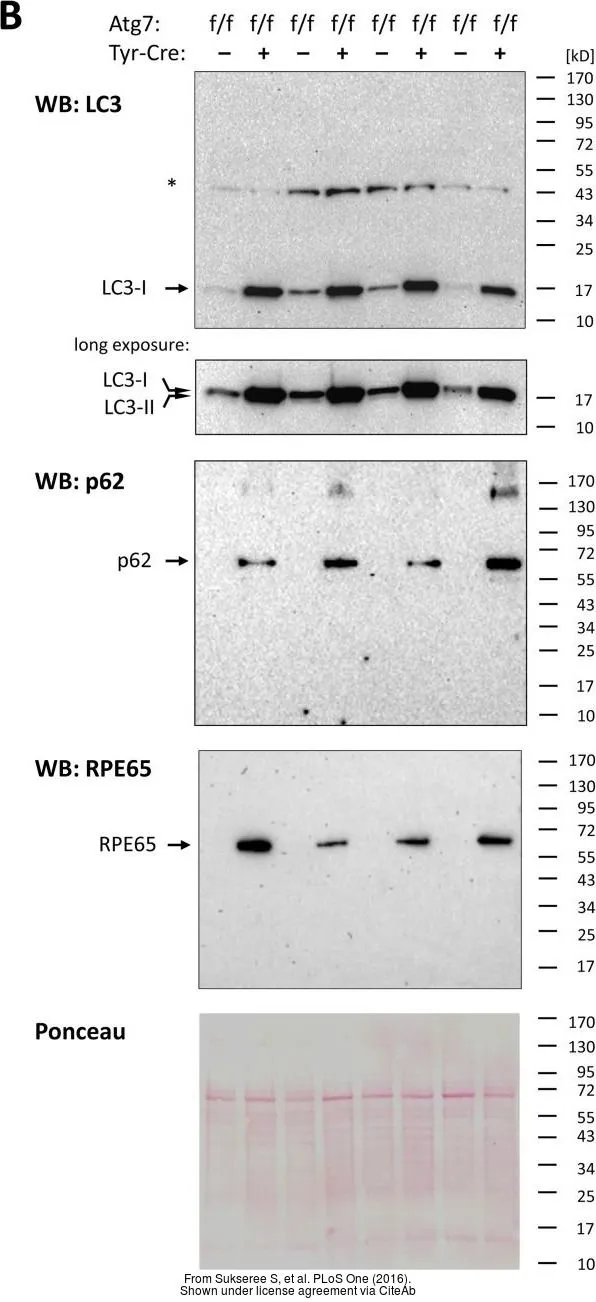
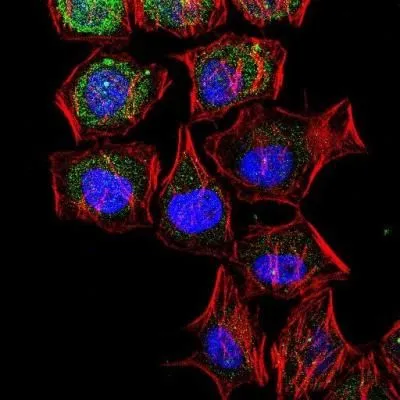
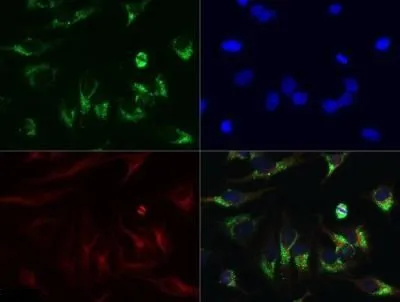

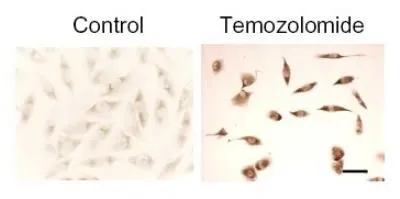
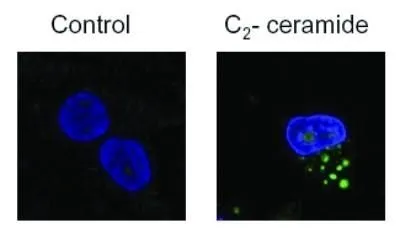
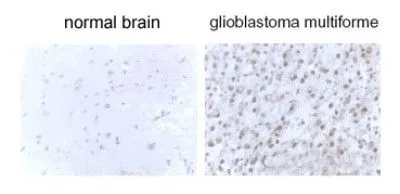
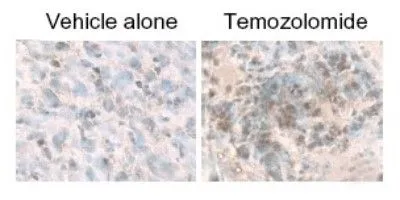
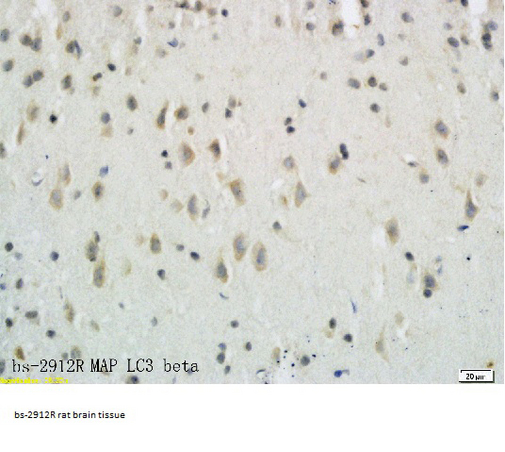

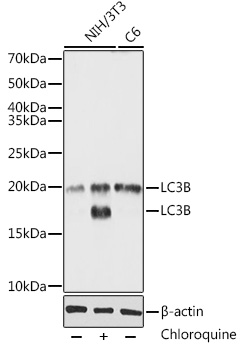

![ICC/IF analysis of PFA-fixed C6 cells with/without Chloroquine (50 microM, 37oC, 20 hrs) treatment using GTX00949 LC3B antibody [GT1187]. Right : untreated C6 cells Left : C6 cells with 50 microM Chloroquine (20 hrs, 37oC) treatment Orange : Primary antibody Blue : DAPI Dilution : 1:100](https://www.genetex.com/upload/website/prouct_img/normal/GTX00949/GTX00949_20200327_ICC-IF_42_w_23053121_487.webp)
